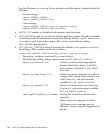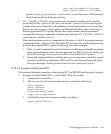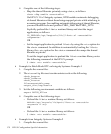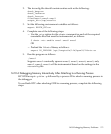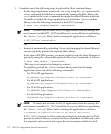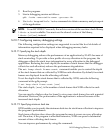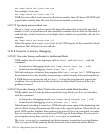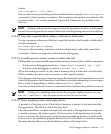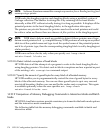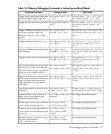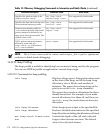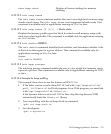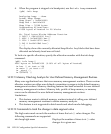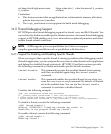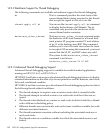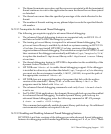
NOTE: Software literature names this concept as premature free or Reading/writing freed
memory using a pointer.
WDB tracks the dangling pointers and dangling blocks using a modified version of
Garbage collection. The enabler for doing this is by retaining all the freed blocks
internally within RTC without actually freeing it as long as possible. It displays all the
potential pointers to the freed dangling blocks, in the application data space.
The pointers are potential because the pointers need not be actual pointers and could
be a datum value and hence there are chances of false positives in the dangling report.
NOTE: WDB tries to help as much as possible to detect if these pointers are of type
datum or real pointers. In a -g compiled binary, WDB performs a look-up on a symbol
table to nd the symbol name and type to nd the symbol name of the potential pointer
and if its of pointer type, then the corresponding dangling block is really dangling(not
a false positive).
WDB turns on these checks, only when you specify set heap-check
retain-freed- blocks on.
14.10.8.6 Detect in-block corruption of freed blocks
HP WDB detects all the attempts of a program to write to the freed dangling blocks
using dangling pointers. We detect such in-block corruptions and are reported as part
of the existing info corruption command output.
14.10.8.7 Specify the amount of guard bytes for every block of allocated memory
HP WDB enables you to programmatically control the size of guard bytes for every
block of the allocated memory. You can use these guard bytes to spot very rare and
non-trivial boundary (buffer over-run and buffer under-run) corruptions. This again
is available optionally when the user specifies set heap-check
retain-freed-blocks <on>.
14.10.9 Comparison of Memory Debugging Commands in Interactive Mode and Batch
Mode
HP WDB 5.6 and later versions provide consistency in format for the batch mode options
and the interactive mode commands.
The following table lists the memory debugging commands available in batch and
interactive mode:
176 HP-UX Configuration-Specific Information



